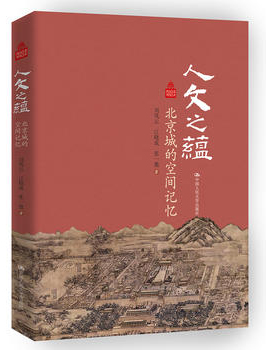Beijing's urban landscape still rich with cultural history

Cultural Deposits in Urban Space of Beijing
Cultural Deposits in Urban Space of Beijing explores the rich cultural deposits and humanistic traditions of urban spaces in Beijing, from the perspectives of urban construction, streets and lanes, commercial markets, scholarly activities, house design and garden art.
The seemingly ordinary urban space has unknown cultural codes behind it. For example, the urban space of the city of Beijing as a whole is close to the shape of a square or a rectangle, which is linked to the concept of “round sky and square earth” of the ancient Chinese. Therefore, the Hall of Prayer for Good Harvest of the Temple of Heaven, a place to offer sacrifices to Heaven, is round, and the Ditan Park is of a square shape for worship of the earth. Many spaces related to the ground or earth, including fields, houses and cities, are also square. Land in a square shape was the most ideal living space for people in ancient times.
Spatial layout seems to be a simple issue of urban construction, but actually there is a deep cultural foundation that lies behind it. For example, it seems that there is nothing particularly amazing about the Fengtai District, one of the six districts of Beijing today. However, Fengtai was the place for raising flowers in the ancient capital city of the Qing Dynasty (1636–1912). Every spring, Han scholars and officials came in constant streams to appreciate the flowers, including the beautiful crape myrtle, oleander, Cape periwinkle and rose. The flowers were mainly supplied to the royal family and government officials. With the skilled planting techniques of Fengtai’s flower farmers, peony could be acquired for the royal family as early as in mid-October.
Over the city’s long history, high-rise buildings have replaced one-story houses, and the modern economy has replaced the agricultural economy, while some factors remain unchanged. For example, book markets on Glass Street, in addition to selling books and antiques, also sold stationery during ancient times. Each time the imperial examination was held, bookshops around Glass Street hung plaques that read, “Best Wishes for a Complete Success.” Up until today, during entrance examinations for colleges each year, pens sold in stationery stores are printed with “Blessings from Confucian Temple.” In this respect, we still share a tacit understanding with the ancients. Another example is that, in order to fully express admiration to Su Shi (1036–1101), Weng Fanggang (1733–1818), a calligrapher, writer and scholar of sphragistics in the Qing Dynasty, named his study “Su Zhai,” literally meaning “the Room of Su Shi.” On every Dec. 19, he would invite his literary friends to hold a birthday event for his idol Su Shi. This allows us to glean that modern society didn’t invent the celebrity idol.
edited by YANG LANLAN
